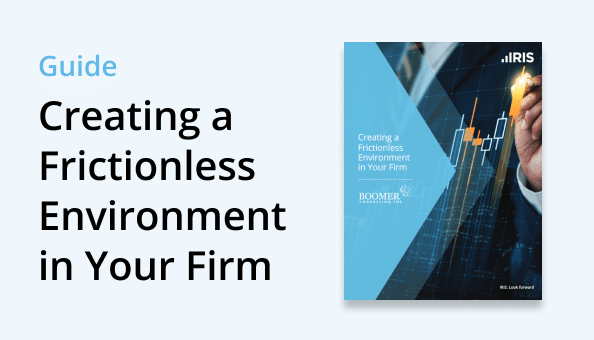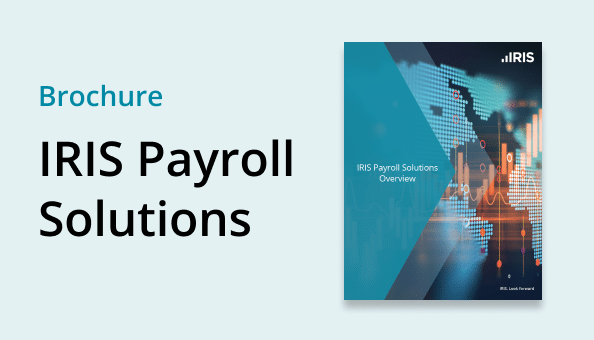BLOGS
Illinois Payroll Tax Guide 2023: Laws, Taxes and more

1. Setting Up Your Business
Before registering with the state of Illinois, businesses must have a federal Employment ID Number (EIN) and an account in the Electronic Federal Tax Payment System (EFTPS).
How to Apply for an Employer Identification Number (EIN)
The application process for EINs is managed by the IRS, To apply digitally, follow the instructions below:
- Determine Your Eligibility
Principal businesses located in the United States or U.S. Territories are eligible to file for an EIN online through the IRS. In order to apply, the person applying must have a valid Taxpayer Identification Number (SSN, ITIN, EIN). Applicants are limited to one EIN per responsible party per day. Per the IRS, “The ‘responsible party’ is the person who ultimately owns or controls the entity or who exercises ultimate effective control over the entity. Unless the applicant is a government entity, the responsible party must be an individual (i.e., a natural person), not an entity.” - Complete Online Application
To properly request an EIN, businesses must complete the IRS’s digital application. To view the application, click here. Applications must be completed in one session, as there is no option to save or return at a later time. Sessions that are inactive for more than 15 minutes will expire. - Submit Online Application
After the online application is completed and submitted, applicants will immediately receive their EIN. The IRS recommends businesses download, save, and print their EIN confirmation notice.
How to Enroll into the Electronic Federal Tax Payment System (EFTPS)
The application process for the EFTPS is managed by the IRS, To apply digitally, follow the instructions below:
- Begin Enrollment
To start, visit http://eftps.gov and click “Enroll” - Accept the Privacy Act and Paperwork Reduction Act
From the enrollment tab, complete the first step (“Start”) by reviewing the Privacy Act and Paperwork Reduction Act. After reading, check the box next to “I accept the Privacy Act and Paperwork Reduction Act.” To continue, select “Business” under the “Enroll me as:” prompt. - Complete Enrollment Form
Note: If you used a coupon in the past two years or if your business is less than a year old, you are pre-enrolled in EFTPS (per EFTPS.gov)
Complete the Enrollment form by filling in each section with the appropriate information – EIN, business name/location, contact information, and payment information.
Click the “Review” button to continue. - Review Enrollment Form
Prior to submitting, review the EFTPS form to ensure all information is accurate.
Click the “Complete” button to continue. - Complete Enrollment Form
On this screen you will receive confirmation for the submission of your EFTPS enrollment application. Within seven business days, you will receive your PIN in the mail.
This PIN is used to log in to your business’s EFTPS account.

2. Register with the Illinois Department of Employment Security (IDES)
After receiving your EIN and EFTPS account, your business can now register with the Illinois Department of Employment Security. To register a new business, complete the REG-1 form. Applications can be completed online, by mail, or in person.
- Registering with the IDES Online
- To register online, first visit https://mytax.illinois.gov/
- On the homepage, select “Register a New Business (Form REG-1)” under the “Register” section.
- Following the instructions given, complete application.
- After review, submit the form.
- Registering with the IDES by Mail
- To register by mail, first open the REG-1 form from the MyTax website.
- Complete the form. The IDES recommends filling out the form digitally, then printing off the completed application.
- After printing off the form, send the application to:
CENTRAL REGISTRATION DIVISION ILLINOIS DEPARTMENT OF REVENUE PO BOX 19030
SPRINGFIELD IL 62794-9030 - Allow for 6 to 8 weeks for processing of mailed applications.
- Registering with the IDES at a Branch
- To register in-person, visit your local IDES Branch.
- After arriving, request a REG-1 form and fill out the appropriate sections.
- After completion, return to an IDES representative.
3. Set Up Payroll
How Illinois payroll is set up will differ by business and industry. The main decisions are:
- Payment method (direct deposit or paper check)
- Pay periods (weekly, bi-weekly, semi-monthly, or monthly)
Learn more about managing your company’s payroll in-house or with a service.
4. Collect Employee Payroll Forms
Best completed during the onboarding of new employees, businesses must collect the following forms for all employees in order to be compliant with state and federal requirements:
- W-4 – Employee’s Withholding Certificate
- I-9 – Employment Eligibility Verification
- Direct Deposit Authorization (if applicable)
- IL-W-4 – Employee’s and Other Payee’s Illinois Withholding
Note: All employees must complete their I-9 verification no later than their first day of work. I-9 forms must be stored for 3 years after the date of hire, 1 year after employment ends, or whichever is later.
5. Collect, Review, Approve Timesheets
For hourly and salary non-exempt employees, businesses are required to collect, review, and approve all timesheets within the appropriate time frame. Timesheets can be paper or electronic forms.
To manage timesheets with ease, businesses can utilize time and attendance solutions such as CAVU HCM.
Combining software and concierge services, CAVU’s payroll solution eliminates errors and improves the employee experience without extra stress on your operation. Illinois payroll taxes can be difficult but led by experts on all local, state, and federal policies and regulations, CAVU helps manage every part of your payroll process, including time and attendance, yearly filings, tax credit applications, and more.
To review pay period guidelines for the state of Illinois, click here.

6. Calculate Payroll, Pay employees
In order to pay employees for their timesheets, businesses must first calculate their state of Illinois payroll. To calculate your company’s Illinois payroll and pay your employees, follow the six steps below:
- Calculate Total Time Worked for Period for Each Employee
In order to manage your Illinois payroll and taxes, you will need to determine how many hours your employees worked in a pay period. How you execute this step depends if an employee is salaried or hourly, and non-exempt or exempt. Follow the appropriate step below.
Note: Employers must classify their employees correctly according to the Fair Labor Standards Act (“FLSA”) or risk costly compliance violations. Misclassification of employees as exempt from overtime (when they are actually non-exempt) is one of the most common Fair Labor Standards Act (FLSA) violations and a focal point for government enforcement.
For Salaried Employees
An employee is exempt from the FLSA typically must be paid a salary above a certain level and work in an administrative, professional, executive, computer or outside sales role. Generally, salaried employees are expected to work a minimum 40 hours per week, but are exempt from receiving overtime wages. As a result, employers rarely require employees (On Illinois payroll) to track their time. Due to this dynamic, payroll managers can generally assume that pay for each period will be the same. To decide the exemption status of an employee, use the U.S. Department of Labor’s online duties test.
For Non-Exempt Salaried Employees
If Illinois payroll employees are classified as non-exempt, then they are entitled to overtime pay when they work more than 40 hours in a work week (consecutive seven day period). Non-exempt employees can earn an hourly wage or a salary. To calculate Illinois payroll of non-exempt salaried employees, calculate the total hours of work for a single pay period, noting overtime hours. The total wages for each employee will be their salary for minimum hours worked plus any overtime wages. Overtime wages should be paid at the employee's salary, broken down into an hourly rate times 1.5.
For Hourly Employees
Calculating total time worked for a period for an hourly employee is a matter of simple math. Using a timesheet or clocked hours, add up total hours worked for a given work week. This should be done weekly for Illinois businesses, regardless of your Illinois payroll frequency.
Calculating Gross Pay
After calculating each employee’s total hours, calculate their gross pay for a given period. Gross pay is an employee’s total earnings before taxes and deductions. Calculating this is as simple as multiplying an employee’s hourly rate by their hours worked. For non-exempt employees, work beyond 40 hours in a work week should be paid at a rate of time and one-half.
Gross Pay = (Hourly Rate)(Hours Work) + (Overtime Pay) - Total Payroll Deductions
In accordance with federal regulations, businesses are required to subtract Illinois payroll deductions from gross pay prior to determining an employee’s total pay. There are both pre-tax and post tax deductions, each with their own requirements.
There are numerous pre-tax payroll deductions, including:- Retirement contributions - IRA accounts, 401(k), 403(b)
- Insurance premiums - health, vision, dental, life
- Wage garnishes - court-ordered deductions, for employees who fail to repay debt
- Union dues
- Child support payments
- Calculate Total Payroll Taxes
Employee Taxes
To calculate the total Illinois payroll taxes owed by each employee you will need to determine the percentage of income that should be withheld from local, state, and federal income. To do so, refer to the employee’s W-4 form.
Below are the types of Illinois payroll taxes that will be withheld:- Federal Income Tax (See IRS Withholding Tables)
- State Income Tax (See Illinois Withholding Tables)
- Social Security (6.2%)
- Medicare (1.45%)
Note: there is no local income tax in the state of Illinois.
Employer Taxes
Along with calculating the withheld Illinois payroll taxes for each employee, businesses are responsible for their own taxes.
The following is a list of payroll-related taxes required for businesses in the state of Illinois:- Social Security (6.2%)
- Medicare (1.45%)
- Federal Unemployment Insurance (FUTA + 0.6%)
- State Unemployment Insurance Taxes (IL Department of Unemployment Security)
- Subtract Deductions and Taxes from Gross Pay
To determine each employee’s net pay, simply subtract total deductions and total taxes from gross pay.
Net Pay = Gross Pay - (Post-Tax Deductions + Tax Deductions) - Distribute Employee Paychecks
In the state of Illinois, businesses have the opportunity to choose their pay schedules, such as daily, weekly, bi-weekly, semi-monthly, and monthly. Each period length has different guidelines, set by 820 ILCS 115/4:- Monthly Pay Periods: wages must be paid on or before 21 calendar days after the end of the period in which they were earned. As defined by the Fair Labor Standards Act of 1938, monthly pay periods are only allowed for executive, administrative, and professional employees.
- Semi-monthly/bi-weekly: wages must be paid no later than 13 calendar days after the end of the period in which they were earned.
- Weekly: wages must be paid no later than 7 calendar days after the end of the period in which they were earned.
- Daily: wages must be paid no later than 24 hours after the end of the period in which they were earned.
In addition to the above requirements, businesses should consider local policies when setting up their payroll.
7. Pay and File Payroll Taxes with Illinois and Federal Government
In order to stay compliant with state and federal regulations, all businesses must submit payment for Illinois payroll taxes on the appropriate schedules and file payroll tax documentation using the appropriate paper or electronic forms.
For more information on federal or Illinois payroll tax forms, click the appropriate link below:
For additional information, use the resources below.
- Depositing and Reporting Federal Employment Taxes
- Electronic Federal Tax Payment System (EFTPS)
- Illinois Withholding Income Tax Payment and Return Due Dates
- Depositing Illinois State Income and Unemployment Taxes
- Illinois Unemployment Taxes and Reporting
For assistance on federal forms, employers can contact the IRS at 1-800-829-1040 or http://www.irs.gov.
For assistance on Illinois payroll tax forms, employers can use the following methods:
| Illinois State Contact Information | |
| Forms Hotline | 1-800-356-6302 |
| Taxpayer Assistance | 1-217-782-3336 |
| TDD Assistance | 1-800-544-5304 |
| Internet Address | http://tax.illinois.gov |
8. Document and Store Payroll Records
Per the Fair Labor Standards Act (FLSA) and Illinois Minimum Wage Law (IMWL), employers in the state of Illinois are required to record, document, and store employee records. For each Illinois payroll employee, the following information is required to be recorded and stored:
- Employee's full name and Social Security Number.
- Address, including zip code.
- Birth date
- Sex and occupation.
- Time and day of week when an employee's work week begins.
- Hours worked each day.
- Total hours worked each workweek.
- Basis on which employee's wages are paid (e.g., "$9 per hour", "$440 a week", "piecework").
- Regular hourly pay rate.
- Total daily or weekly straight-time earnings.
- Total overtime earnings for the workweek.
All additions to or deductions from the employee's wages. - Total wages paid each pay period, date of payment and the pay period covered by the payment.
(source)
Unlike federal regulations, the state of Illinois requires business owners to store both payroll records and payroll tax documentation for at least five years.
9. Complete Year End Payroll Illinois Tax Reports
By January 31st of each year, employers are required to issue to employees and file W-2s for the previous year. For employees, businesses should utilize W-2 forms. For contractors, 1099 forms.
W-2s for each employee are usually completed by the payroll software and show important information, including annual earnings, taxes withheld, and other information the employee needs to file their state and federal income tax returns.












